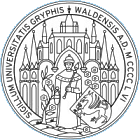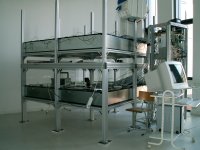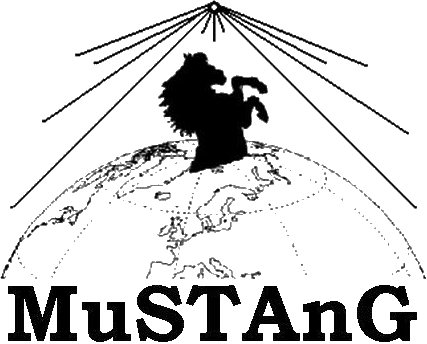 |
INSTITUTE OF PHYSICS, UNIVERSITY OF GREIFSWALDCHAIR OF EXPERIMENTAL PHYSICS: INTERFACE PHYSICSExperimentalphysik II - Grenzflächenphysik, Prof. Dr. Rainer Hippler |
Dipl. phys. André Mengel
MuSTAnG - Muon Spaceweather Telescope for Anisotrophies Greifswald
Aims of the MuSTAnG project are the examination and the forecast of so called coronal mass ejections (CME). CME's are big clouds of charged particles originated by the Sun. Roughly once a year (depending on the actual solar activity) such a CME may reach the Earth and yields to hazards for all kinds of modern electronic devices, e.g. satellite navigation, communication, up to global power blackouts.

The high energetic cosmic radiation from solar or galactic sources produces in the upper Earth's atmosphere showers of different particles. Our space weather telescope detects one part of these secondary cosmic rays, the muons. In case of a CME travels between Sun and Earth the shock front of the CME yields to a decrease or increase (depending of the direction of the incoming cosmic radiation) of the normal cosmic radiation background. Because of the cosmic radiation is much faster than a CME, the detection of such a variation enables a forecast of the arrival of a CME. The MuSTAnG telescope is part of a global network of muon space weather telescopes, e.g. located in Australia, Japan and Brazil. This may provide a forecast up to 24 hours. The project is supported by the European Space Agency. For actual data and information see the MuSTAnG web page.
